The global vehicle health monitoring market is expected to grow from USD 12.2 Billion in 2020 to USD 32.2 Billion by 2028, at a CAGR of 12.9% during the forecast period 2021-2028.
The term "vehicle health monitoring" refers to monitoring important driving indicators such as tiredness, sleepiness, and attention. Automotive active health monitoring is a type of health technology that improves safety within a car. Medical technology inside a car that tracks vital signs might lead to advances in security, health, and well-being. Injuries are frequently caused by annoyance, fatigue, or other medical problems when a person is in a bad mood. Furthermore, several original equipment manufacturers focus on the research and development of an active health monitoring system in terms of their location under the driver's seat. Medical technology inside a car that tracks vital signs may lead to advances in safety, health, and well-being. Managing human factors necessitates controlling, recording, and monitoring the driver's most critical necessary parameters. Within the automobile industry, several organizations, government agencies, colleges, and large corporations are collaborating to investigate the potential advantages of these technologies.
The factors driving the vehicle health monitoring market are cause of Increased sales of luxury cars in emerging markets, as well as developed nations such as Europe and North America, are projected to boost the market's growth. The market is projected to be driven by an increase in the number of accidents, road rage, and increased vehicle speeds as a result of better roads. The factors restraining the Vehicle Health Monitoring market growth are,the industry statistics of vehicle health monitoring systems on a broad scale have been hampered by mass quarantines and travel restrictions. Market conditions, such as a scarcity of raw materials and labor, caused a slew of issues in designing and developing new systems. This resulted in a significant supply and demand discrepancy, which harmed manufacturers' revenue. Threats to vehicle health monitoring systems' cybersecurity Infrastructure that isn't linked. Furthermore, growing financial insecurity among end-users hindered and affected the industry's sales of passenger and commercial cars.
The primary opportunity for the vehicle health monitoring market is Electric car usage is on the rise across the world.
This study delivers a comprehensive analysis of health management, sales channel, vehicle type. The health management segment includes prognostics and diagnostics. The prognostics segment dominated the vehicle health monitoring market. By adoption of predictive health management to enhance industrial growth. The sales channel segment includes Aftermarket and OEM. The OEM part dominated the vehicle health monitoring market, Because of the expansion of numerous OEMs throughout the world, the industry's income is being strengthened. The vehicle type segment includes commercial andpassenger. The passenger segment dominated the vehicle health monitoring market, as the popularity of electric vehicles grows, so does the sector of passenger vehicle health monitoring.
The vehicle health monitoring market has been divided into North America, Europe, Asia-Pacific, Middle East & Africa, and South America. Europe vehicle health monitoring market dominated the market in 2020, followed by Asia-Pacific. Consumers with high purchasing capacity may invest in feature-premium automobiles, mostly luxury cars, which is a crucial driving force in this region. One of the main reasons for adopting in-car health monitoring systems, such as the automotive active health monitoring system, is to increase research and development to assure the vehicle user's safety. Due to rising disposable income and purchasing capacity in India, China, and Japan, the Asia Pacific market for active automotive health monitoring systems is expected to develop.
Some of the notable players in the vehicle health monitoring market are Robert Bosch, Continental, Zubie, Delphi Technologies, KPIT, Vector Informatik, Luxoft, Visteon Corporation, and OnStar. Competitive landscape, manufacturing footprint, company description, financial overview, business strategies, and recent developments are some of the characteristics that have been covered for market participants. The growing need for safe and secure cars is propelling the market for automotive active health monitoring systems.
Vehicle Health Monitoring Market Analysis and Forecast, by Health Management
Vehicle Health Monitoring Market Analysis and Forecast, by Sales Channel
Vehicle Health Monitoring Market Analysis and Forecast, by Vehicle Type
Vehicle Health Monitoring Market Analysis and Forecast, by Region
Report Description:
1. Introduction
1.1. Objectives of the Study
1.2. Market Definition
1.3. Research Scope
1.4. Currency
1.5. Key Target Audience
2. Research Methodology and Assumptions
3. Executive Summary
4. Premium Insights
4.1. Porter’s Five Forces Analysis
4.2. Value Chain Analysis
4.3. Top Investment Pockets
4.3.1. Market Attractiveness Analysis By Health Management
4.3.2. Market Attractiveness Analysis By Sales Channel
4.3.3. Market Attractiveness Analysis By Vehicle Type
4.3.4. Market Attractiveness Analysis By region
4.4. Industry Trends
5. Market Dynamics
5.1. Market Evaluation
5.2. Drivers
5.2.1. Shifting trends towards adoption of electric vehicles across the globe
5.2.2. Internet prevalence is increasing in Asia Pacific
5.3. Restrains
5.3.1. Lack of connected infrastructure
5.4. Opportunities
5.4.1. The use of electric vehicles is increasing all around the world.
6. Global Vehicle Health Monitoring Market Analysis and Forecast, By Health Management
6.1. Segment Overview
6.2. Prognostics
6.3. Diagnostics
7. Global Vehicle Health Monitoring Market Analysis and Forecast, By Sales Channel
7.1. Segment Overview
7.2. Aftermarket
7.3. OEM
8. Global Vehicle Health Monitoring Market Analysis and Forecast, By Vehicle Type
8.1. Segment Overview
8.2. Commercial
8.3. Passenger
9. Global Vehicle Health Monitoring Market Analysis and Forecast, By Regional Analysis
9.1. Segment Overview
9.2. North America
9.2.1. U.S.
9.2.2. Canada
9.2.3. Mexico
9.3. Europe
9.3.1. Germany
9.3.2. France
9.3.3. U.K.
9.3.4. Italy
9.3.5. Spain
9.4. Asia-Pacific
9.4.1. Japan
9.4.2. China
9.4.3. India
9.5. South America
9.5.1. Brazil
9.6. Middle East and Africa
9.6.1. UAE
9.6.2. South Africa
10. Global Vehicle Health Monitoring Market-Competitive Landscape
10.1. Overview
10.2. Market Share of Key Players in Global Vehicle Health Monitoring Market
10.2.1. Global Company Market Share
10.2.2. North America Company Market Share
10.2.3. Europe Company Market Share
10.2.4. APAC Company Market Share
10.3. Competitive Situations and Trends
10.3.1. Product Launches and Developments
10.3.2. Partnerships, Collaborations, and Agreements
10.3.3. Mergers & Acquisitions
10.3.4. Expansions
11. Company Profiles
11.1. Robert Bosch
11.1.1. Business Overview
11.1.2. Company Snapshot
11.1.3. Company Market Share Analysis
11.1.4. Company ProductPortfolio
11.1.5. Recent Developments
11.1.6. SWOT Analysis
11.2. Continental
11.2.1. Business Overview
11.2.2. Company Snapshot
11.2.3. Company Market Share Analysis
11.2.4. Company ProductPortfolio
11.2.5. Recent Developments
11.2.6. SWOT Analysis
11.3. Zubie
11.3.1. Business Overview
11.3.2. Company Snapshot
11.3.3. Company Market Share Analysis
11.3.4. Company Product Portfolio
11.3.5. Recent Developments
11.3.6. SWOT Analysis
11.4. Delphi Technologies
11.4.1. Business Overview
11.4.2. Company Snapshot
11.4.3. Company Market Share Analysis
11.4.4. Company Product Portfolio
11.4.5. Recent Developments
11.4.6. SWOT Analysis
11.5. KPIT
11.5.1. Business Overview
11.5.2. Company Snapshot
11.5.3. Company Market Share Analysis
11.5.4. Company Product Portfolio
11.5.5. Recent Developments
11.5.6. SWOT Analysis
11.6. Vector Informatik
11.6.1. Business Overview
11.6.2. Company Snapshot
11.6.3. Company Market Share Analysis
11.6.4. Company Product Portfolio
11.6.5. Recent Developments
11.6.6. SWOT Analysis
11.7. Luxoft
11.7.1. Business Overview
11.7.2. Company Snapshot
11.7.3. Company Market Share Analysis
11.7.4. Company Product Portfolio
11.7.5. Recent Developments
11.7.6. SWOT Analysis
11.8. Visteon Corporation
11.8.1. Business Overview
11.8.2. Company Snapshot
11.8.3. Company Market Share Analysis
11.8.4. Company Product Portfolio
11.8.5. Recent Developments
11.8.6. SWOT Analysis
11.9. OnStar
11.9.1. Business Overview
11.9.2. Company Snapshot
11.9.3. Company Market Share Analysis
11.9.4. Company Product Portfolio
11.9.5. Recent Developments
11.9.6. SWOT Analysis
List of Table
1. Global Vehicle Health Monitoring Market, By Health Management, 2018-2028 (USD Billion)
2. Global Prognostics, Vehicle Health Monitoring Market, By Region, 2018-2028 (USD Billion)
3. Global Diagnostics, Vehicle Health Monitoring Market, By Region, 2018-2028 (USD Billion)
4. Global Vehicle Health Monitoring Market, By Sales Channel, 2018-2028 (USD Billion)
5. Global Aftermarket, Vehicle Health Monitoring Market, By Region, 2018-2028 (USD Billion)
6. Global OEM, Vehicle Health Monitoring Market, By Region, 2018-2028 (USD Billion)
7. Global Vehicle Health Monitoring Market, By Vehicle Type, 2018-2028 (USD Billion)
8. Global Commercial, Vehicle Health Monitoring Market, By Region, 2018-2028 (USD Billion)
9. Global Passenger,Vehicle Health Monitoring Market, By Region, 2018-2028 (USD Billion)
10. North America Vehicle Health Monitoring Market, By Health Management, 2018-2028 (USD Billion)
11. North America Vehicle Health Monitoring Market, By Sales Channel, 2018-2028 (USD Billion)
12. North America Vehicle Health Monitoring Market, By Vehicle Type, 2018-2028 (USD Billion)
13. U.S. Vehicle Health Monitoring Market, By Health Management, 2018-2028 (USD Billion)
14. U.S. Vehicle Health Monitoring Market, By Sales Channel, 2018-2028 (USD Billion)
15. U.S. Vehicle Health Monitoring Market, By Vehicle Type, 2018-2028 (USD Billion)
16. Canada Vehicle Health Monitoring Market, By Health Management, 2018-2028 (USD Billion)
17. Canada Vehicle Health Monitoring Market, By Sales Channel, 2018-2028 (USD Billion)
18. Canada Vehicle Health Monitoring Market, By Vehicle Type, 2018-2028 (USD Billion)
19. Mexico Vehicle Health Monitoring Market, By Health Management, 2018-2028 (USD Billion)
20. Mexico Vehicle Health Monitoring Market, By Sales Channel, 2018-2028 (USD Billion)
21. Mexico Vehicle Health Monitoring Market, By Vehicle Type, 2018-2028 (USD Billion)
22. Europe Vehicle Health Monitoring Market, By Health Management, 2018-2028 (USD Billion)
23. Europe Vehicle Health Monitoring Market, By Sales Channel, 2018-2028 (USD Billion)
24. Europe Vehicle Health Monitoring Market, By Vehicle Type, 2018-2028 (USD Billion)
25. Germany Vehicle Health Monitoring Market, By Health Management, 2018-2028 (USD Billion)
26. Germany Vehicle Health Monitoring Market, By Sales Channel, 2018-2028 (USD Billion)
27. Germany Vehicle Health Monitoring Market, By Vehicle Type, 2018-2028 (USD Billion)
28. France Vehicle Health Monitoring Market, By Health Management, 2018-2028 (USD Billion)
29. France Vehicle Health Monitoring Market, By Sales Channel, 2018-2028 (USD Billion)
30. France Vehicle Health Monitoring Market, By Vehicle Type, 2018-2028 (USD Billion)
31. U.K. Vehicle Health Monitoring Market, By Health Management, 2018-2028 (USD Billion)
32. U.K. Vehicle Health Monitoring Market, By Sales Channel, 2018-2028 (USD Billion)
33. U.K. Vehicle Health Monitoring Market, By Vehicle Type, 2018-2028 (USD Billion)
34. Italy Vehicle Health Monitoring Market, By Health Management, 2018-2028 (USD Billion)
35. Italy Vehicle Health Monitoring Market, By Sales Channel, 2018-2028 (USD Billion)
36. Italy Vehicle Health Monitoring Market, By Vehicle Type, 2018-2028 (USD Billion)
37. Spain Vehicle Health Monitoring Market, By Health Management, 2018-2028 (USD Billion)
38. Spain Vehicle Health Monitoring Market, By Sales Channel, 2018-2028 (USD Billion)
39. Spain Vehicle Health Monitoring Market, By Vehicle Type, 2018-2028 (USD Billion)
40. Asia Pacific Vehicle Health Monitoring Market, By Health Management, 2018-2028 (USD Billion)
41. Asia Pacific Vehicle Health Monitoring Market, By Sales Channel, 2018-2028 (USD Billion)
42. Asia Pacific Vehicle Health Monitoring Market, By Vehicle Type, 2018-2028 (USD Billion)
43. Japan Vehicle Health Monitoring Market, By Health Management, 2018-2028 (USD Billion)
44. Japan Vehicle Health Monitoring Market, By Sales Channel, 2018-2028 (USD Billion)
45. Japan Vehicle Health Monitoring Market, By Vehicle Type, 2018-2028 (USD Billion)
46. China Vehicle Health Monitoring Market, By Health Management, 2018-2028 (USD Billion)
47. China Vehicle Health Monitoring Market, By Sales Channel, 2018-2028 (USD Billion)
48. China Vehicle Health Monitoring Market, By Vehicle Type, 2018-2028 (USD Billion)
49. India Vehicle Health Monitoring Market, By Health Management, 2018-2028 (USD Billion)
50. India Vehicle Health Monitoring Market, By Sales Channel, 2018-2028 (USD Billion)
51. 59. India Vehicle Health Monitoring Market, By Vehicle Type, 2018-2028 (USD Billion)
52. South America Vehicle Health Monitoring Market, By Health Management, 2018-2028 (USD Billion)
53. South America Vehicle Health Monitoring Market, By Sales Channel, 2018-2028 (USD Billion)
54. South America Vehicle Health Monitoring Market, By Vehicle Type, 2018-2028 (USD Billion)
55. Brazil Vehicle Health Monitoring Market, By Health Management, 2018-2028 (USD Billion)
56. Brazil Vehicle Health Monitoring Market, By Sales Channel, 2018-2028 (USD Billion)
57. Brazil Vehicle Health Monitoring Market, By Vehicle Type, 2018-2028 (USD Billion)
58. Middle East and Africa Vehicle Health Monitoring Market, By Health Management, 2018-2028 (USD Billion)
59. Middle East and Africa Vehicle Health Monitoring Market, By Sales Channel, 2018-2028 (USD Billion)
60. Middle East and Africa Vehicle Health Monitoring Market, By Vehicle Type, 2018-2028 (USD Billion)
61. UAE Vehicle Health Monitoring Market, By Health Management, 2018-2028 (USD Billion)
62. UAE Vehicle Health Monitoring Market, By Sales Channel, 2018-2028 (USD Billion)
63. UAE Vehicle Health Monitoring Market, By Vehicle Type, 2018-2028 (USD Billion)
64. South Africa Vehicle Health Monitoring Market, By Health Management, 2018-2028 (USD Billion)
65. South Africa Vehicle Health Monitoring Market, By Sales Channel, 2018-2028 (USD Billion)
66. South Africa Vehicle Health Monitoring Market, By Vehicle Type, 2018-2028 (USD Billion)
List of Figures
1. Global Vehicle Health Monitoring Market Segmentation
2. Global Vehicle Health Monitoring Market: Research Methodology
3. Market Size Estimation Methodology: Bottom-Up Approach
4. Market Size Estimation Methodology: Top-Down Approach
5. Data Triangulation
6. Porter’s Five Forces Analysis
7. Value Chain Analysis
8. Global Vehicle Health Monitoring Market Attractiveness Analysis ByHealth Management
9. Global Vehicle Health Monitoring Market Attractiveness Analysis BySales Channel
10. Global Vehicle Health Monitoring Market Attractiveness Analysis ByVehicle Type
11. Global Vehicle Health Monitoring Market Attractiveness Analysis By Region
12. Global Vehicle Health Monitoring Market: Dynamics
13. Global Vehicle Health Monitoring Market Share by Health Management(2021& 2028)
14. Global Vehicle Health Monitoring Market Share by Sales Channel (2021& 2028)
15. Global Vehicle Health Monitoring Market Share by Vehicle Type (2021& 2028)
16. Global Vehicle Health Monitoring Market Share by Regions (2021 & 2028)
17. Global Vehicle Health Monitoring Market Share by Company (2020)
Market research is a method of gathering, assessing and deducing data & information about a particular market. Market research is very crucial in these days. The techniques analyze about how a product/service can be offered to the market to its end-customers, observe the impact of that product/service based on the past customer experiences, and cater their needs and demands. Owing to the successful business ventures, accurate, relevant and thorough information is the base for all the organizations because market research report/study offers specific market related data & information about the industry growth prospects, perspective of the existing customers, and the overall market scenario prevailed in past, ongoing present and developing future. It allows the stakeholders and investors to determine the probability of a business before committing substantial resources to the venture. Market research helps in solving the marketing issues challenges that a business will most likely face.
Market research is valuable because of the following reasons:
Our research report features both the aspects; qualitative and quantitative. Qualitative part provides insights about the market driving forces, potential opportunities, customer’s demands and requirement which in turn help the companies to come up with new strategies in order to survive in the long run competition. The quantitative segment offers the most credible information related to the industry. Based on the data gathering, we use to derive the market size and estimate their future growth prospects on the basis of global, region and country.
Our market research process involves with the four specific stages.

Data Collection: This stage of the market research process involves with the gathering and collecting of the market/industry related data from the sources. There are basically two types of research methods:
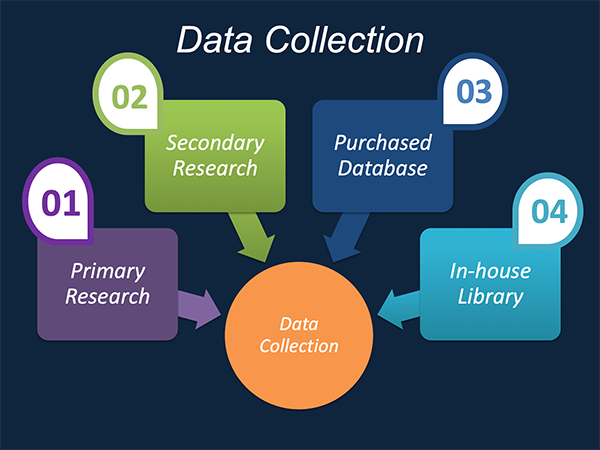
Data Synthesis: This stage includes the evaluation and assessment of all the data acquired from the primary and secondary research. It likewise includes in evaluating the information for any disparity watched while information gathering identified with the market. The data & information is gathered with consideration to the heterogeneity of sources. Scientific and statistical methods are implemented for synthesizing dissimilar information sets and provide the relevant data which is fundamental for formulating strategies. Our organization has broad involvement with information amalgamation where the information goes through different stages:


Market Formulation & Deduction: The last stage includes assigning the data & information in a suitable way in order to derive market size. Analyst reviews and domain based opinions based on holistic approach of market estimation combined with industry investigation additionally features a crucial role in this stage.
This stage includes with the finalization of the market size and numbers that we have gathered from primary and secondary research. With the data & information addition, we ensure that there is no gap in the market information. Market trend analysis is finished by our analysts by utilizing data extrapolation procedures, which give the most ideal figures to the market.
Data Validation: Validation is the most crucial step in the process. Validation & re-validation through scientifically designed technique and process that helps us finalize data-points to be used for final calculations. This stage also involves with the data triangulation process. Data triangulation generally implicates the cross validation and matching the data which has been collected from primary and secondary research methods.





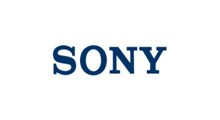

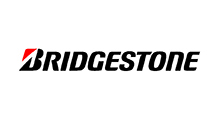

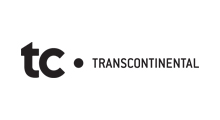















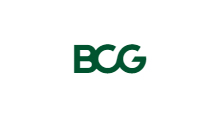


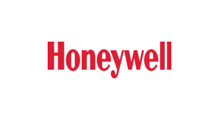

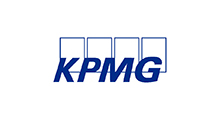
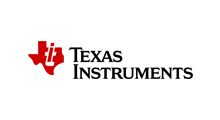



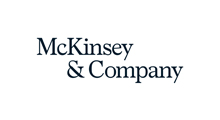

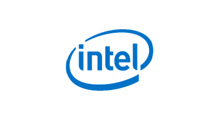







Free Customization
Countries can be added on demand
Free yearly update on purchase of Multi/Corporate User License
Companies served till date

We serve our customers 24x7 for 365 days through calls, emails and live chat options.

Huge database of exceptional market reports bringing market intelligence to your fingertips.

SSL enabled, we offer you various secured payment options for risk free purchase.